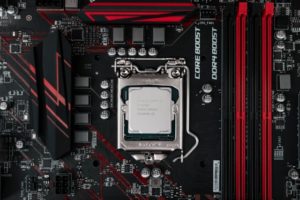The Oracle Certified Foundations Associate, Database credential provides concrete evidence of hands-on database knowledge and skills.
Preparing for the Oracle Database Foundations | 1Z0-006 exam and earning the associated certification arms you with a fundamental level of programming and database conceptual knowledge and skills and demonstrates your capabilities. This certification also shows your potential to progress to a higher level of skill, knowledge, and certification during your early stage of employment, making you an asset to your employer.
The Oracle Certified Foundations Associate, Database is focused on students in two-year colleges, secondary schools and four year colleges and universities who have participated in the Oracle Academy program and/or are studying computer science including relevant database curricula, as well as faculty members who teach database and computer science classes, and those who are just beginning their database careers.
Though the exam does not assume any hands-on experience with Oracle Database products, you need basic understanding of the different types of database models and components. You also need to know how tables are designed and the types of relationships between tables to manipulate data via SQL queries. And among other topics, you also need to be familiar with mapping of ERD model into relations.
Prepare to Pass Exam: 1Z0-006
This is a foundational level exam. Passing this exam gives the certification credential demonstrating your understanding of the different types of database models and components. And, that you are knowledgeable of database components, concepts and design, implementation of business roles, SQL language and queries, and ERD modeling and languages to manage data and transactions.
Review Exam Topics
What is a Database?
Database Concepts
- Describe the components of a database system
- Explain the purpose of a database
Types of Databases Models
- Describe types of database models (relational, object oriented, flat, network…)
- Compare the differences between the different types of databases
Relational Database Concepts
- Describe the characteristics of a relational database
- Explain the importance of relational databases in business
- List the major transformations in database technology
Defining Levels of Data Abstraction
- Define the terminology used for database storage
- Describe levels of data abstraction used in relational databases
Gathering Requirements for Database Design
- Gather requirements to implement a database solution
- Explain business rules
The Language of Database and Data Modeling
Defining a Table in a Database
- Describe the structure of a single table
Using Conceptual Data Modeling
- Describe a conceptual data model
- Explain the components of a conceptual/logical model
Defining Instance and Schema in Relational Databases
- Examine examples of an entity and a corresponding table
- Examine examples of an attribute and a corresponding column
- Explain instances and schemas in a relational database
Using Unique Identifiers, Primary and Foreign Keys
- Identify unique identifiers and a corresponding primary key
- Define composite and compound primary keys
- Define relationships and corresponding foreign keys
- Define barred relationships and the corresponding primary keys
Data Modeling – Creating the Physical Model
Creating Physical Data Models
- Create a physical data model
- Compare conceptual and physical data models
Documenting Business Requirements and Rules
- Explain the importance of clearly communicating and accurately capturing database information requirements
- Identify structural business rules
- Identify procedural business rules
- Identify business rules that must be enforced by additional programming (eg SQL)
Defining Supertype and Subtype Entity Relationships
- Describe an example of an entity
- Define supertype and subtype entities
- Implement rules for supertype and subtype entities
Using Attributes
- Describe attributes for a given entity
- Identify and provide examples of instances
- Distinguish between mandatory and optional attributes
- Distinguish between volatile and nonvolatile attributes
Using Unique Identifiers (UIDs)
- Define the types of unique identifiers
- Select a unique identifier using business rules
- Define a candidate unique identifier
- Define an artificial unique identifier
Identifying Relationships
- Explain one-to-one, one-to-many, and many-to-many relationships
- Identify the optionality necessary for a relationship
- Identify the cardinality necessary for a relationship
- Identify nontransferable relationships
- Name a relationship
- Create ERDish sentences to represent ERDs
- Create ERDs to represent ERDish sentences
Resolving Many to Many Relationships and Composite Unique Identifiers
- Resolve a many-to-many relationship using an intersection entity
- Identify the variations of unique identifiers after creation of an intersection entity
- Define a barred relationship
- Identify composite unique identifiers
Identifying Hierarchical, Recursive, and Arc Relationships
- Define a hierarchical relationship
- Define a recursive relationship
- Define an arc relationship
- Identify UIDs in a hierarchical, recursive and arc relationship model
- Construct a model using recursion and hierarchies
- Identify similarities and differences in an arc relationship and a supertype/subtype entity
Tracking Data Changes Over Time
- Explain necessity of tracking data changes over time
- Identify data that changes over time
- Identify the changes in unique identifiers after adding the element of time to an ERD
Validating Data Using Normalization
- Define the purpose of normalization
- Define the rules of First, Second, and Third Normal Forms
- Apply the rules of First, Second, and Third Normal Form
Mapping the Physical Model
Mapping Entities,Columns and Data Types****
- Map entities to identify database tables to be created from an ERD
- Identify column data types from an ERD
- Identify common data types used to store values in a relational database
Mapping Primary, Composite Primary and Foreign Keys
- Identify primary keys from an ERD
- Identify which ERD attributes would make candidate primary keys
- Describe the purpose of a foreign key in an Oracle Database
- Identify foreign keys from an ERD
- Describe the relationship between primary keys, composite primary keys, and foreign keys in an Oracle Database
Introduction to SQL
Using Structured Query Language (SQL)
- Explain the relationship between a database and SQL
Using Data Definition Language (DDL)
- Describe the purpose of DDL
- Use DDL to manage tables and their relationships
Using Data Manipulation Language (DML) and Transaction Control Language (TCL)
- Describe the purpose of DML
- Use DML to manage data in tables
- Use TCL to manage transactions
Defining and using Basic Select statements
- Identify the connection between an ERD and a Relational Database using SQL SELECT statements
- Build a SELECT statement to retrieve data from an Oracle Database table
- Use the WHERE clause to the SELECT statement to filter query results
Displaying Sorted Data
- Use the ORDER BY clause to sort SQL query results
Defining Table Joins
- Describe the different types of joins and their features
- Use joins to retrieve data from multiple tables



